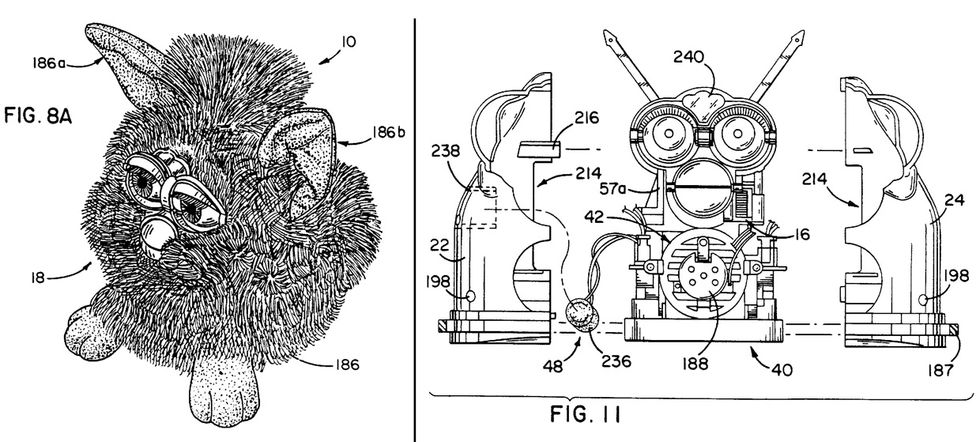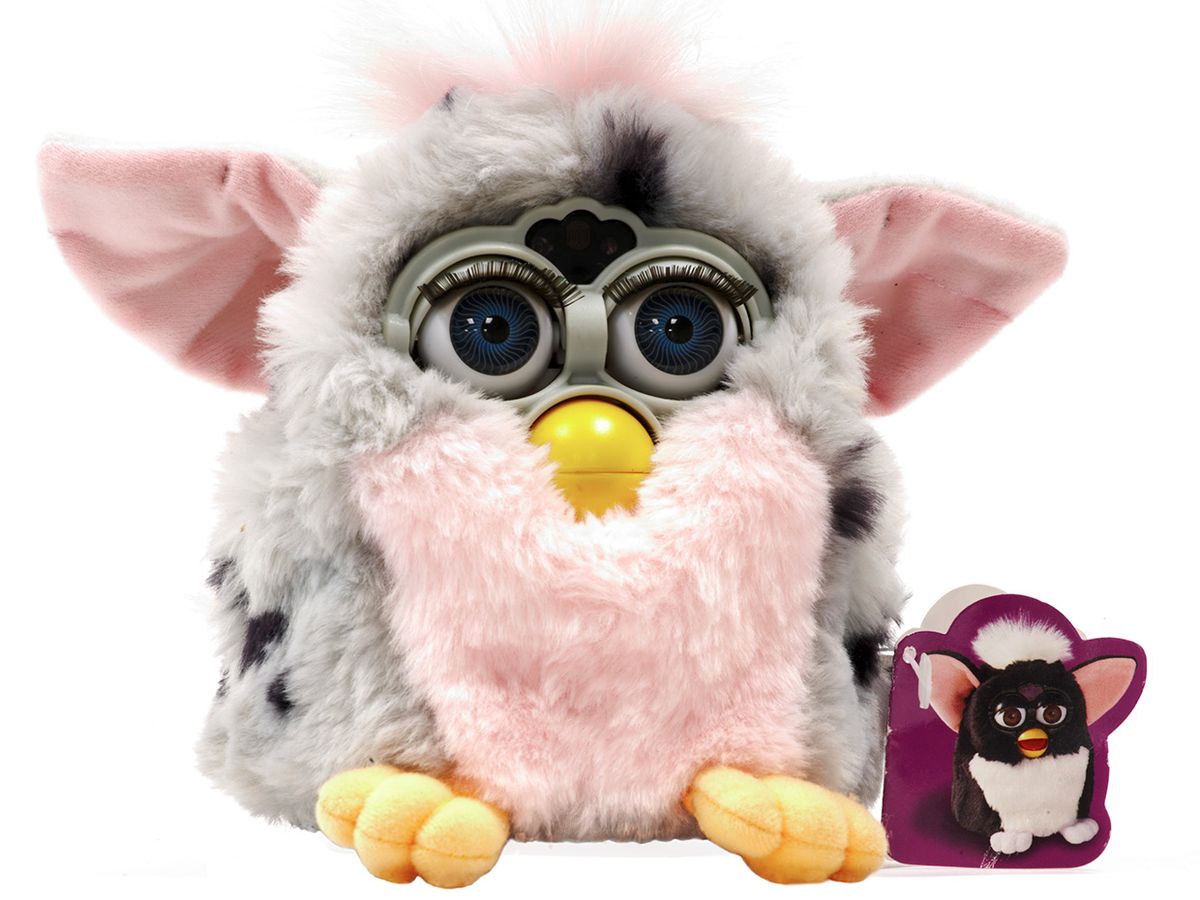When I learned that the Computer History Museum in Mountain View, Calif., had added a Furby to its permanent collection, my first thought was, Why?
I am not of the Furby Generation and never quite understood the animatronic furball’s appeal. When it first hit stores in the fall of 1998 as the must-have toy of the holiday season, I was just out of college and living in Europe. I wasn’t drawn to the creepy/cute cross between an owl and a gremlin, nor did I know any kids who were clamoring for it. Curiosity did not compel me to perform a hacker’s autopsy of the toy, nor did I have the creative chops to adapt them into weirdly compelling installations, as the artist Kelly Heaton did in the early 2000s. Eventually, Hasbro sold more than 40 million Furbys, none of them to me.
And so I wondered: Why would a serious museum like the CHM deem this toy worthy of inclusion?
When a museum takes on an artifact, it’s no trivial matter. Deciding to acquire an object usually involves a curator pleading with a committee of collections managers (who are concerned about space), conservators (who have to figure out how to preserve the object), exhibit designers (who want to know when it might go on display), and other curators (who have competing priorities for potential acquisitions). The decision often pivots on the stories the object can tell and its historical importance.
In accepting a new artifact, the museum is striking a legally binding agreement to hold the object in trust in perpetuity for research and educational purposes. It’s expensive to store objects in secure, climate-controlled settings, and a museum can’t just chuck an artifact in the bin when it runs out of space.
The Furby, being a toy, was an unsurprising choice for The Strong, a museum in Rochester, N.Y. devoted to the history and exploration of play. Furby won the British Toy Retailers Association’s Toy of the Year award in 1998, which is how one ended up in the collections of the V&A in London. But what was the toy’s appeal for the Computer History Museum?

According to the donation criteria on its website, CHM collects and preserves both hardware and software, associated trade literature, photographs, and related ephemera. The museum likes rare and unique objects, limited product runs, and items that never made it to market. They also aim to have a representative sample of commercially influential consumer and industrial objects. That’s where the Furby fits in—a popular toy with a computer as its soul. In addition to acquiring not one but three Furbys, the museum also procured the toy’s original source code.
The Furby’s source code was written by David Hampton and Wayne Schulz to run on a variation of the 6502 microprocessor, the 8-bit chip that powered the Apple II, Commodore 64, and BBC Micro. The source code is well documented, making it easy to follow regardless of your knowledge of assembly. After a computer programmer posted the source code online last August, one commenter on Hacker News praised it for being “surprisingly sophisticated.”
But reading lines of code doesn’t equal the lived experience. In Hampton and Schulz’s comments on how the Furby’s voice pitch was controlled, for instance, they noted that the maximum range was “very squeeeeeke.” To appreciate what they meant, check out the auditory cacophony of a flock of squawking Furbys:
At minute 1:26, the Furby organ’s creator, Sam Battle, flips the collective awakening switch, and 44 Furbys start chattering. It’s…something.
The Furby’s U.S. patent reveals that the inventors, Hampton and Caleb Chung, recognized the durability required for a children’s toy. The patent describes at length the reversible motor that drove all of the moving body parts, including the ears, eyes, and wings. It also repeatedly mentions the lifelike interactions the inventors hoped children would have with the toy. They wanted the Furby to seem intelligent and capable of learning, which they programmed into the 6502.
Take the Furby’s apparent ability to learn language. Fresh out of the box, a Furby speaks its native tongue of Furbish, an invented language that incorporates aspects of Thai, Mandarin, and Hebrew. It might say “Dah-ay-loh u-tye,” when it wakes up, which literally translates as “big light up,” but it is simply saying good morning. The vocabulary of the early Furbys included 42 words. Over time, as children played with their toy, its language ability seemingly evolved. In time, the Furby might start speaking English or 23 other languages, but this function was preprogrammed.
The Furby was also programmed with Pavlovian responses to specific stimuli. For example, if a child tickled the Furby, the toy might respond with a kiss. If the child then petted the Furby, the chances of getting a kiss the next time the child tickled it increased. Kids may have thought they were training their Furby, but the Furby was actually training them.
Sherry Turkle, the Abby Rockefeller Mauzé Professor of the Social Studies of Science and Technology at MIT and founding director of the MIT Initiative on Technology and Self, studied how children played with Furbys as part of her explorations of human interactions with sociable robots.
One of the best-known experiments from Turkle’s group looked at whether a robot could elicit an emotional response. Developed by Freedom Baird, who was then a graduate student at MIT’s Media Lab, the experiment asked participants to hold an object—a live hamster or gerbil, a Barbie doll, and a Furby—upside down for as long as they could. The animal, which clearly didn’t like being upside down, squirmed so much that it was righted almost immediately. Barbie didn’t protest, and participants held the doll upside down until their arms grew tired.
The Furby, after about 30 seconds of being upside down, was programmed to quiver and squeak, “Me scared.” At that point, participants relented and turned it right-side up. They recognized that the toy wasn’t alive, yet they treated it as if it were.
At the Computer History Museum, the Furby is included in the permanent exhibition Revolution: The First 2000 Years of Computing. It is located in a section that focuses on the robots around us. The exhibit draws attention to the multibillion-dollar robotics industry that produces serious tools as well as fun toys.
The staff of CHM continually debates the best way to preserve the computer user’s experience. That experience can be remarkably different from person to person, depending on the user’s age, gender, prior exposure to similar devices, and many other factors. Preserving the user experience can mean completely restoring a computer to working order. Or it may involve creating emulation stations that allow visitors to interact with modern simulations of past programs. A more modest solution, as in the case of the Furby, is to simply preserve the static object along with its original source code.
What CHM visitors won’t get to experience is the Furby in action. Not to say that the museum should turn itself into an animatronic zoo, but what if the Furby could narrate its own story, from its first “Dah-ay-loh u-tye” on through its preprogrammed evolution into full fuzzy Furbyhood. It’s just a toy, to be sure, but I’d say the Furby has definitely earned a spot in history.
An abridged version of this article appears in the January 2019 print issue as “Coded for Cuteness.”
Part of a continuing series looking at photographs of historical artifacts that embrace the boundless potential of technology.
Allison Marsh is a professor in Women and Gender Studies at the University of South Carolina and codirector of the university’s Ann Johnson Institute for Science, Technology & Society. She combines her interests in engineering, history, and museum objects to write the Past Forward column, which tells the story of technology through historical artifacts. Marsh is currently working on a book on the history of women in electrical engineering.



